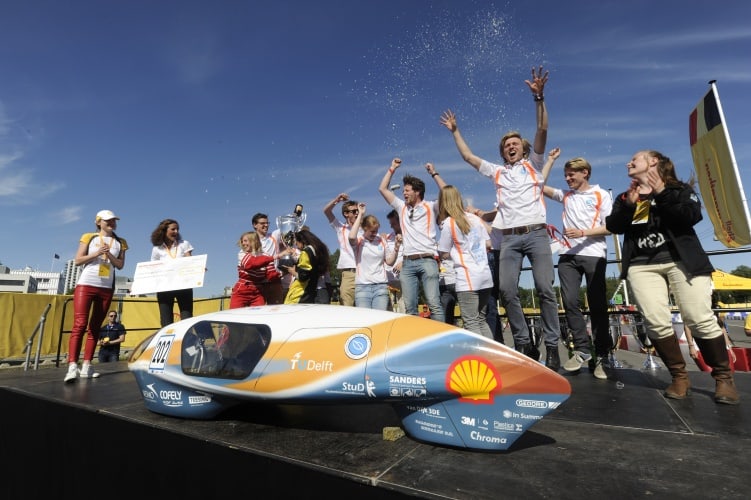One of the ways we describe what an engineer does is that they find solutions to problems. The rising cost, and in some cases the diminishing availability, of fuel mean there’s a real need to come up with new ways to power getting from A to B. In recent weeks I’ve come across two interesting examples of how engineers are applying their knowledge of fuel consumption to power vehicles. The first is to see how fast you can go in a manure-powered bus, the second to go as far as possible on one litre of fuel (or equivalent).

The ‘Bus Hound’, painted to look like a Friesian cow, was powered by liquefied biogas produced from cow manure. It managed to set a land speed record for a standard bus by clocking up a lap speed of 77mph – pretty impressive when you consider it wouldn’t normally go above 56mph. The Chief Engineer involved said the stunt was aimed at bringing to light the viability, power and credibility of buses fuelled in this way. I’d say it’s certainly done that, particularly as Reading Buses has now challenged other operators to try to beat its time.
More remarkable in my book, however, were the entries for this year’s Shell Eco-marathon in Rotterdam. With 200 student project teams from nearly 30 countries racing with a choice of seven types of fuel, there are some wonderful vehicles on show - all designed to eke out that last ‘drop’ of fuel. The skills, knowledge and (if you’ll excuse the pun) the drive of the young engineers taking part were clear for all to see. An incredible amount of time and effort had gone into their work. You can’t make a vehicle travel the distance from Rotterdam to Moscow on a litre of fuel without putting the hours in. That’s an incredible 2551.8km/litre, compare that to the winning 320km/l in 1985 for a sense of the impact of engineering innovation in this field.
The competition was fierce and the innovations truly inspiring but the Eco-marathon is much more than the competition. As well as the main attraction, the organisers invite local schools and families, engaging them in hands-on activities, talking to real engineers and scientists and getting them thinking about where science and engineering could lead them.
It was interesting to see that the team there also wants to highlight the breadth of options and opportunities within engineering. This mirrors the approach of activities within the Tomorrow’s Engineers programme, including the current Energy Quest and the Big Bang programme that brings to life the science, technology, engineering and maths being taught in the classroom at national, regional and local events.
While Berkshire residents may tell the tale of the black and white ‘cowpat-powered’ bus, I would hope that the young engineers participating in the Eco-marathon and those who went along with their classmates and families will be inspired to learn to do more. I hope their experience has a real impact both in terms of their future engagement with the engineering and design principles involved and the contribution those ideas may make to the future reduction of energy consumption.
From next year the Eco-marathon will be held in the UK, providing a global platform to showcase the UK’s young engineering talent. We must use that opportunity to drive more UK entries to the competition and seize the opportunity of a major event at an iconic London landmark to inspire the competitors and innovators of the future.




Glasgow trial explores AR cues for autonomous road safety
They've ploughed into a few vulnerable road users in the past. Making that less likely will make it spectacularly easy to stop the traffic for...